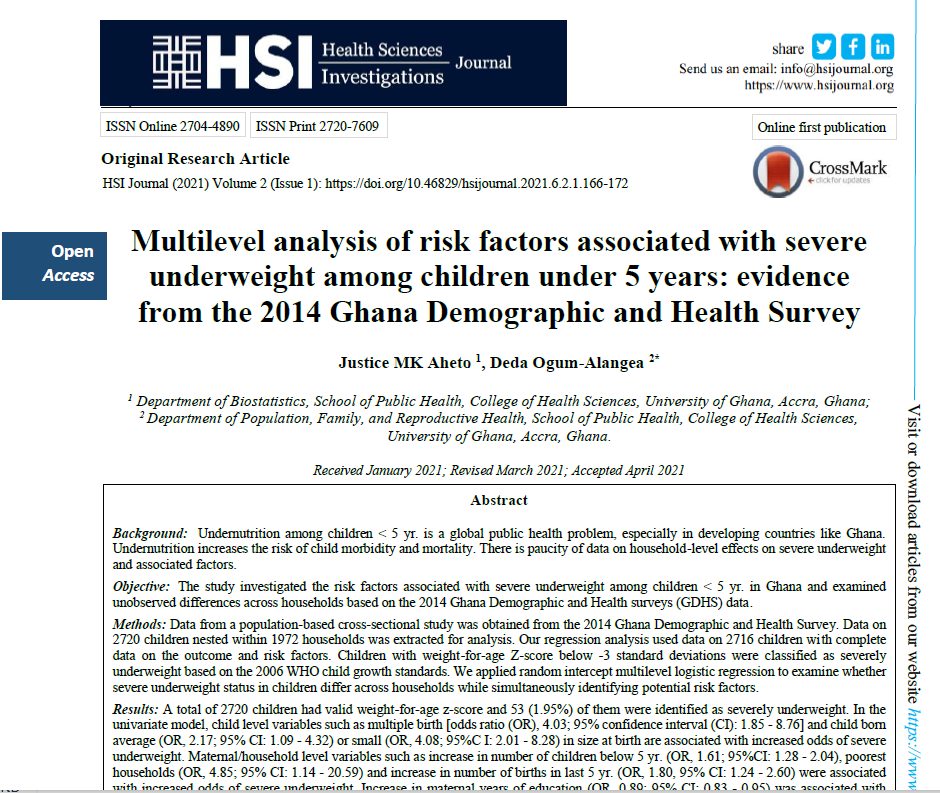Multilevel analysis of risk factors associated with severe underweight among children under 5 years: evidence from the 2014 Ghana Demographic and Health Survey.
Multilevel analysis of risk factors associated with severe underweight among children under 5 years: evidence from the 2014 Ghana Demographic and Health Survey.
Abstract
Introduction: Undernutrition among children under 5 years is a global public health problem, especially in developing countries like Ghana. Undernutrition increases the risk of child morbidity and mortality. There is paucity of data on household-level effects on severe underweight and associated factors. We aim to use our findings to inform policy and intervention strategies geared towards reducing the burden of under-five child severe malnutrition.
Methodology: Data from a population-based cross-sectional study was obtained from the 2014 Ghana Demographic and Health Survey. Data on 2720 children was extracted for analysis. Our regression analysis used data on 2716 children with complete data on the outcome and risk factors. Children with weight-for-age Z-score below -3 standard deviations (SD) were classified as severely underweight based on the 2006 WHO child growth standards. We applied random intercept multilevel logistic regression to examine whether or not severe underweight status in children differ across households while simultaneously identifying potential risk factors.
Results: A total of 2720 children had valid weight-for-age z-score and 53 (1.95%) of them were identified as severely underweight. Child level variables such as multiple birth and child born average or small in size at birth are associated with increased risk of severe underweight while maternal/household level variables such as increase in number of children below 5 years, poorest households and increase in number of births in last 5 years are associated with increased risk of severe underweight. Increase in maternal years of education decreases the risk of severe underweight. In the multilevel logistic model, only type of birth, size of child at birth and maternal education were independently associated with severe underweight. There was no significant residual household-level variations in severe underweight status.
Conclusions: Our findings suggest that improving maternal education, socioeconomic conditions of families, and family planning are critical in addressing severe underweight.


